Essential first aid training for tree surgeons
Working at height. Handling chainsaws. Dealing with heavy branches, unstable ground, and unpredictable weather. For tree surgeons, every day on the job comes with a degree of risk. That’s why having the right first aid training is absolutely vital – not just to tick a compliance box, but to save lives in real-world situations.
This guide will walk you through everything you need to know about the right first aid training for tree surgery and forestry work.
Why standard first aid isn’t enough for tree work
Tree surgeons face hazards most workers never encounter. From chainsaw lacerations to falling injuries and remote location delays, your first aid course needs to reflect the environment you work in.
Common injuries tree surgeons may face:
Severe bleeding from chainsaw cuts
Crush injuries from fallen limbs or equipment
Falls from height requiring spinal care
Hypothermia or exposure in cold/wet conditions
Tick bites and Lyme disease risk
Being first on the scene in isolated or wooded locations
Standard first aid just doesn’t cut it. You need something built for your world.
EFAW +F: emergency first aid at work + forestry
If you’re in forestry or arboriculture, this course is often a legal and insurance requirement.
What EFAW +F covers:
Life-threatening emergencies (CPR, choking, unconsciousness)
Catastrophic bleeding control
Chainsaw-specific injuries
Crush injuries and limb entrapment
Cold-related illness (hypothermia)
Ticks and Lyme disease awareness
It’s a 1-day course that builds on standard emergency training by adding “+F” forestry content, which is essential for tree surgeons.
Outdoor first aid: a step beyond
If you often work in remote rural locations or carry out lone working, outdoor first aid takes things further.
Why choose outdoor first aid?
2-day course with more time to build confidence
Focuses on remote care when help may be delayed
Practical, scenario-based learning outdoors
Includes casualty handling, communication, and survival priorities
Many tree surgeons and rope access technicians opt for this course for its relevance to working off-grid or in locations with poor signal.
What makes our training different?
Real-world experience
Our trainers have military, rescue, and outdoor medical backgrounds. We’ve dealt with trauma in the field and know what it takes to stay calm when things go sideways.
Tailored content
We don’t just read from a manual. We show you how to treat a casualty tangled in ropes, bleeding heavily, or pinned by a branch.
Fully compliant
All our courses meet or exceed the standards of:
HSE (Health and Safety Executive)
LANTRA and NPTC training expectations
Forestry Commission guidelines (including +F content)
Ideal for:
Tree surgeons and arborists
Forestry contractors
Rope access teams
Utility workers in wooded areas
Groundskeepers and estate managers
Whether you’re self-employed or managing a team, being prepared isn’t optional. It’s professional.
Course options at a glance
| Course | Duration | Includes +F | Best for |
|---|---|---|---|
| EFAW +F | 1 day | Yes | Compliance, quick training |
| Outdoor first aid | 2 days | Yes | Remote work, in-depth practice |
Summary: don’t just tick the box – train to save a life
First aid for tree surgeons isn’t just about compliance—it’s about capability. Whether you choose a quick EFAW +F course or the more comprehensive outdoor first aid, you’re investing in the safety of yourself, your team, and everyone you work around.
With realistic training, experienced instructors, and a focus on what actually happens in the woods, the right training helps you prepare for the worst while hoping for the best.
Contact Optimal First Aid
If you have any questions or queries – or need some advice about any of our courses, please contact us

